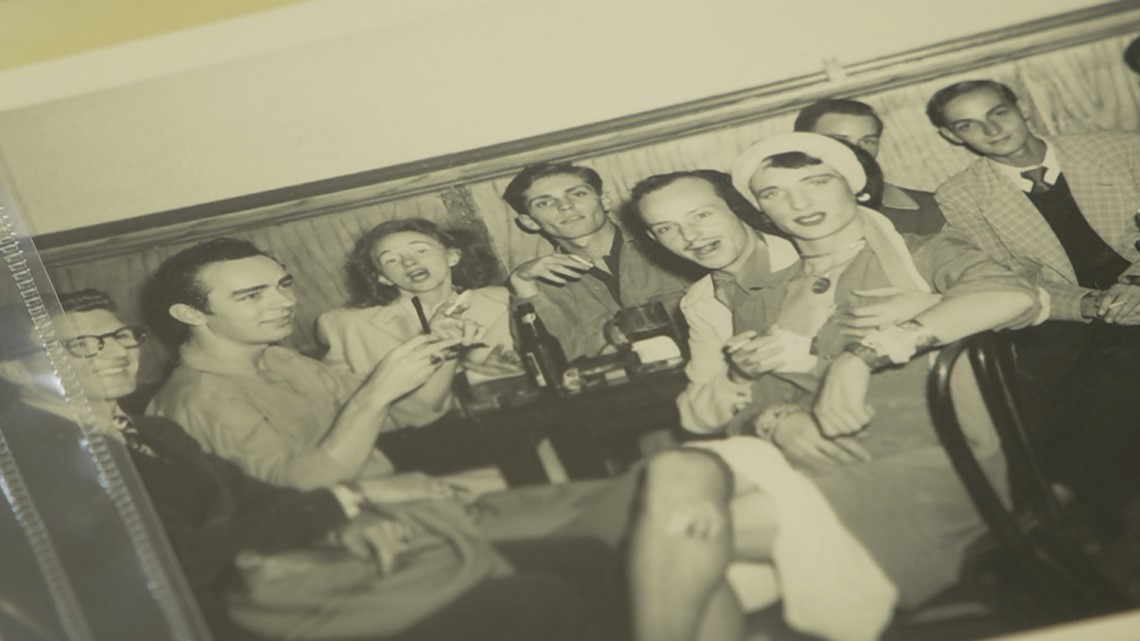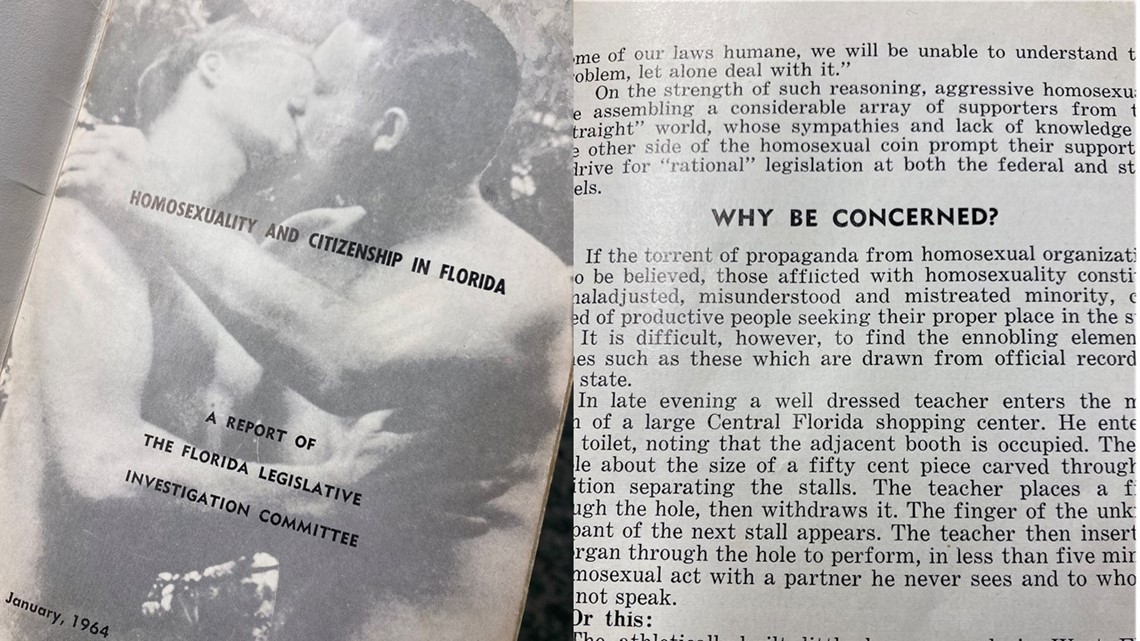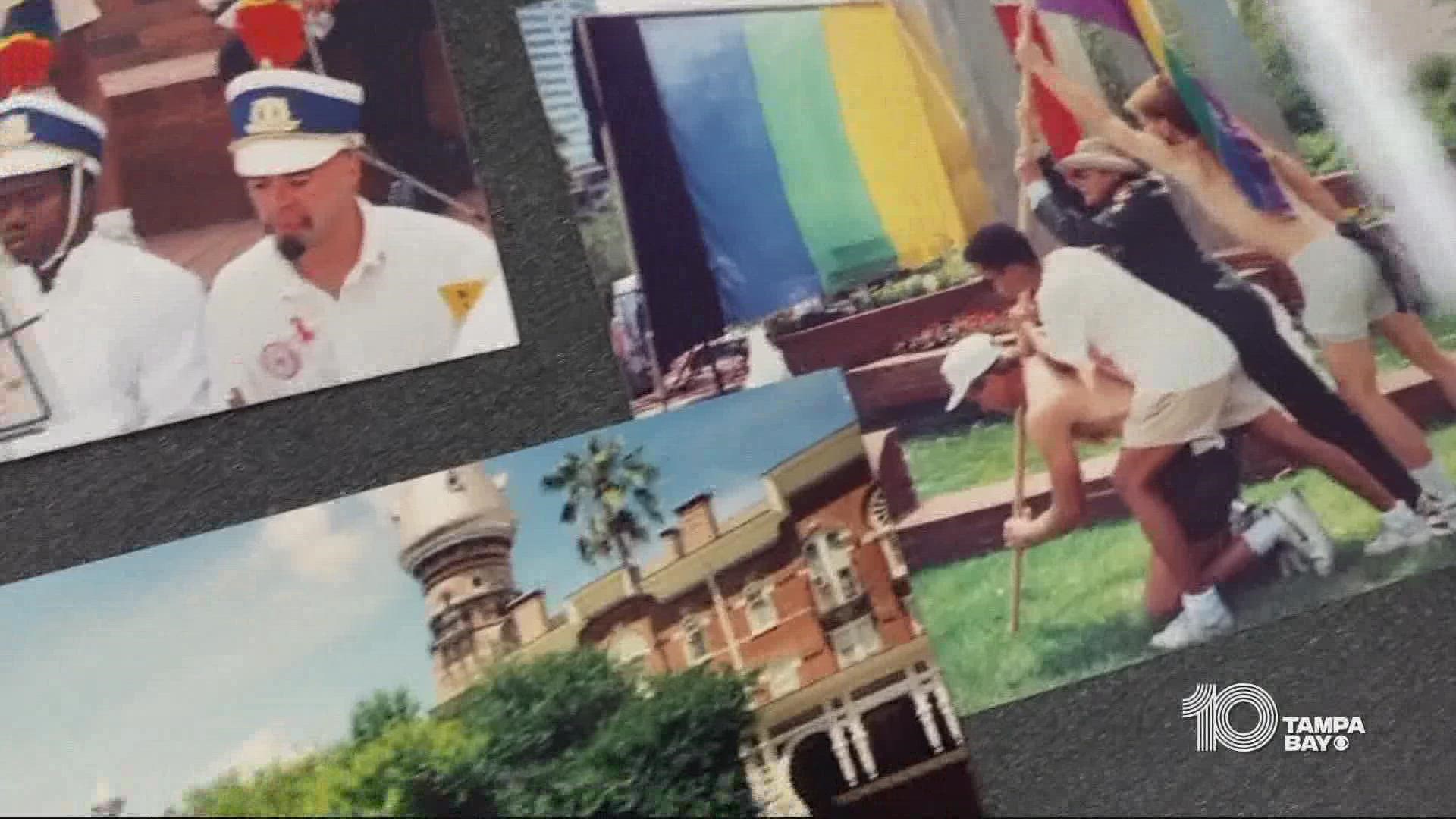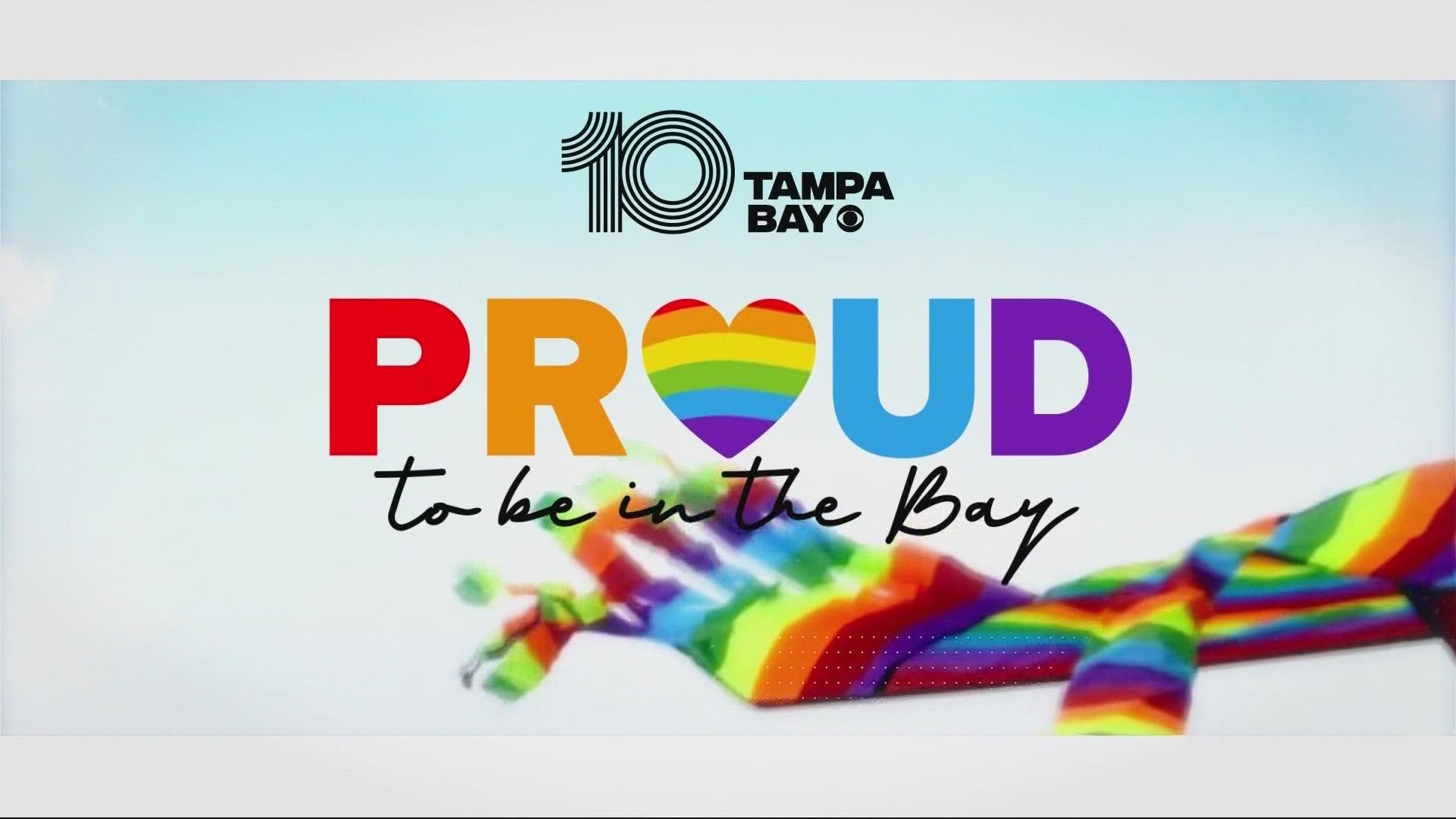TAMPA, Fla. — Beer bottles line the table as a man in glasses and tie leans back, mouth open, and poses for the camera.
In another scene, a group of people huddled together are laughing. Their smiles and, in some cases, clothing, defy the norms of the time.
The candid black-and-white shots capture moments in places that no longer exist, during a period when society might’ve generally preferred they didn’t exist either.
Many of these photos were taken by transgender photographer Bobby Smith during the 1940s and 50s in Tampa-area bars that became safe havens for the LGBTQ community.
They’re part of a larger collection tucked away on the fourth floor of the library on the University of South Florida’s Tampa campus – thousands of papers, pictures, pamphlets, institutional records, and other archival materials documenting LGBTQ+ history, culture, and politics in Tampa and beyond in a way few today have seen or even know exists.


“Shelves and shelves and never-ending shelves of boxes of just glorious queer history,” graduate student Mimi Coto marveled as they slid a box off the shelf.
Inside the box are news clippings and personal correspondences dating back to the 1970s, collected by Edie Daly, a lesbian activist and co-founder of the feminist Women’s Energy Bank. Daly is one of the collection’s largest local donors, according to Coto.
In another box, a March 1982 edition of "The Weekly News," reads "MILITANT HOMOSEXUALS INVADE TAMPA" on the front page. The tongue-in-cheek headline points to coverage of the Southeastern Conference of Lesbians and Gay Men at USF.
Watch 10 Tampa Bay's Pride Month special, "Proud to be in the Bay":
Coto and LGBTQ+ studies collection coordinator Sydney Jordan are part of the small staff trying to piece everything together.
“You get a sense of the work locally that went into sustaining the community, what people were fighting for and against to get to that moment of Pride and celebration,” Jordan said.
“It is a pretty rare collection.”
It started with one collection in 2005 and has since grown to more than 30, ranging from the obvious to the more obscure.
One collection is primarily comprised of documents relating to the day-to-day operations of Equality Florida, starting with its inception as the Human Rights Task Force. Another includes activist pins and pamphlets relating to HIV, AIDS, and STDs.
A handful of boxes – with "age-restricted" printed on the front – contain materials dating back to 1939, documenting the early lack of Asian male nudes in gay imagery and Western photography to the increased proliferation in later years.
“For marginalized groups, they are collecting their own history,” Jordan said. "This information doesn’t exist anywhere else."
The Bobby Smith photo collection is one of Jordan’s favorites, documenting a time when being openly gay was often dangerous, and mainstream coverage wasn’t necessarily favorable.
“There are a lot of newspaper articles about raids and police interactions at these bars,” she said. “But this was a photographer who was just taking pictures of friends.”
A box of photos from the Rex Maniscalco collection includes glimpses into the first years of Pride in Tampa in the 1980s when it was merely a picnic on the USF campus.
Through it all you get a sense of joy and progress of Pride, Jordan says, but also the persecution often endured to get there.
A booklet, known as the "Purple Pamphlet," shows two shirtless men on the cover kissing each other. Printed in 1964, it was a report created by the Florida Legislature for the so-called Johns Committee, which was investigating suspected LGBTQ+ students and faculty in Florida’s public universities.


Students and faculty were pulled from class and questioned by interrogators who threatened to expose their sexual orientation, Jordan explained, which at the time could've been a career-ending revelation.
“It was a study of the homosexual threat in the state of Florida,” she said.
They are the records of a hidden, sometimes hideous history, right here at home. But for Coto, it’s also proof that this history was often hiding in plain sight.
“That’s the best part of this,” they said. “You can find scenes and places you can still see today and see that queer and LGBTQ+ people existed.”
The library is open to anyone by appointment.
10 Tampa Bay: Proud to be in the Bay — see related coverage:
- St. Pete Pride marks 20th year promising biggest celebration yet
- USF special library collection houses hidden LGBTQ+ history of Tampa Bay area
- Organizations raise awareness for transgender resources this Pride Month
- Why Florida's 'Parental Rights in Education' bill brings back memories of 1977 for some
- 'It was the freedom': Friends share what Pride means to them living in 1st gay retirement community
- Raising a 'theybe': Checking in with the Florida family raising a gender-neutral child
- Know your status: Quick and easy HIV testing options available across Tampa Bay


